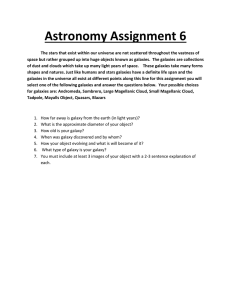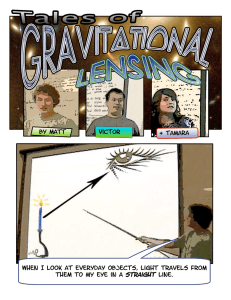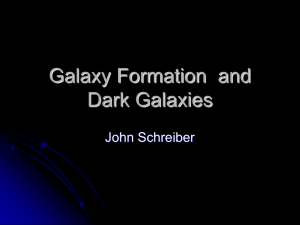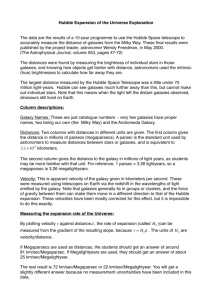Quantum Computation using Photons
advertisement
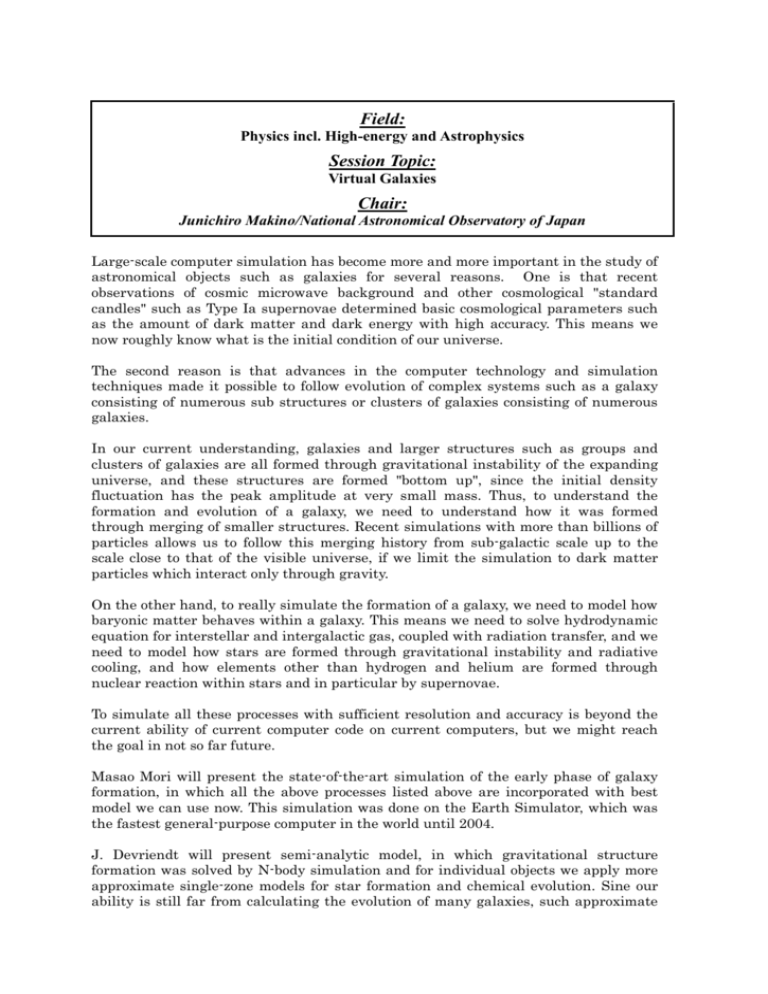
Field: Physics incl. High-energy and Astrophysics Session Topic: Virtual Galaxies Chair: Junichiro Makino/National Astronomical Observatory of Japan Large-scale computer simulation has become more and more important in the study of astronomical objects such as galaxies for several reasons. One is that recent observations of cosmic microwave background and other cosmological "standard candles" such as Type Ia supernovae determined basic cosmological parameters such as the amount of dark matter and dark energy with high accuracy. This means we now roughly know what is the initial condition of our universe. The second reason is that advances in the computer technology and simulation techniques made it possible to follow evolution of complex systems such as a galaxy consisting of numerous sub structures or clusters of galaxies consisting of numerous galaxies. In our current understanding, galaxies and larger structures such as groups and clusters of galaxies are all formed through gravitational instability of the expanding universe, and these structures are formed "bottom up", since the initial density fluctuation has the peak amplitude at very small mass. Thus, to understand the formation and evolution of a galaxy, we need to understand how it was formed through merging of smaller structures. Recent simulations with more than billions of particles allows us to follow this merging history from sub-galactic scale up to the scale close to that of the visible universe, if we limit the simulation to dark matter particles which interact only through gravity. On the other hand, to really simulate the formation of a galaxy, we need to model how baryonic matter behaves within a galaxy. This means we need to solve hydrodynamic equation for interstellar and intergalactic gas, coupled with radiation transfer, and we need to model how stars are formed through gravitational instability and radiative cooling, and how elements other than hydrogen and helium are formed through nuclear reaction within stars and in particular by supernovae. To simulate all these processes with sufficient resolution and accuracy is beyond the current ability of current computer code on current computers, but we might reach the goal in not so far future. Masao Mori will present the state-of-the-art simulation of the early phase of galaxy formation, in which all the above processes listed above are incorporated with best model we can use now. This simulation was done on the Earth Simulator, which was the fastest general-purpose computer in the world until 2004. J. Devriendt will present semi-analytic model, in which gravitational structure formation was solved by N-body simulation and for individual objects we apply more approximate single-zone models for star formation and chemical evolution. Sine our ability is still far from calculating the evolution of many galaxies, such approximate techniques are essential to make useful comparison between the theory and observation.
